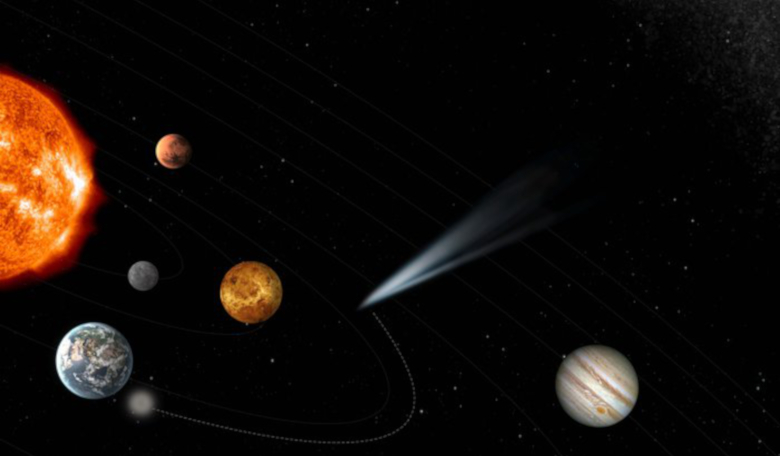‘Comet Interceptor’ has been selected as ESA’s new fast-class mission in its Cosmic Vision Programme. Comprising three spacecraft, it will be the first to visit a truly pristine comet or other interstellar object that is only just starting its journey into the inner Solar System.
The mission will travel to an as-yet undiscovered comet, making a flyby of the chosen target when it is on the approach to Earth’s orbit. Its three spacecraft will perform simultaneous observations from multiple points around the comet, creating a 3D profile of a ‘dynamically new’ object that contains unprocessed material surviving from the dawn of the Solar System.
“Pristine or dynamically new comets are entirely uncharted and make compelling targets for close-range spacecraft exploration to better understand the diversity and evolution of comets,” says Günther Hasinger, ESA’s Director of Science.
“The huge scientific achievements of Giotto and Rosetta – our legacy missions to comets – are unrivalled, but now it is time to build upon their successes and visit a pristine comet, or be ready for the next ‘Oumuamua-like interstellar object.”
What is a Fast mission?
Comet Interceptor is a ‘fast’, or F-class mission. The ‘fast’ refers to the implementation time, with a total development duration from selection to launch readiness of about eight years. F-class missions, which have a launch mass of less than 1000 kg, will share the ride into space with a medium-class mission, taking advantage of additional space in the launcher and the boost to the Sun-Earth Lagrange point L2, which is 1.5 million kilometres ‘behind’ Earth as viewed from the Sun.
Comet Interceptor is foreseen for launch as co-passenger with ESA’s exoplanet-studying Arielspacecraft in 2028. Both missions will be delivered to L2 and from there Comet Interceptor will journey onwards to the chosen target using its own propulsion system.
The selection process has also been fast. Following a call for missions in July 2018, 23 pitches were submitted by the space science community, with six teams subsequently invited to provide more detailed proposals. Among them, Comet Interceptor was chosen at today’s Science Programme Committee to move into a more detailed definition phase.
"We thank the space science community for their excellent proposals, which covered a broad range of novel topics that could be explored within the constraints of the F-class guidelines," says Director Hasinger.
"This type of innovative mission will play an important role in supplementing ESA’s Science Programme as we plan for the next decades of scientific exploration of our Universe.
"We are also happy to maintain the ‘fast’ mission philosophy by selecting Comet Interceptor within a year since the original call for proposals was made."
The Comet Interceptor proposal team comprises an international group of experts led by Geraint Jones (UCL Mullard Space Science Laboratory, UK) and Colin Snodgrass (University of Edinburgh, UK).











